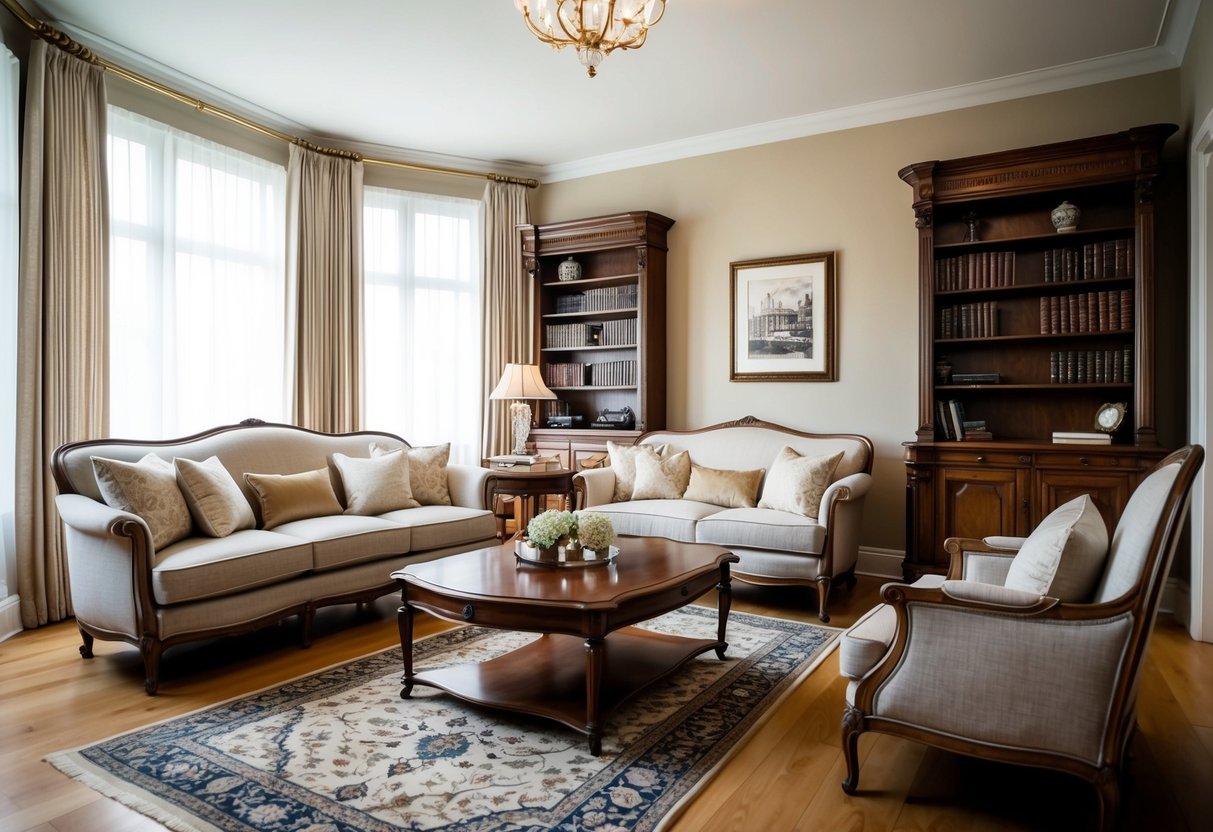Classic Style Revamp: Key Furniture Pieces You Should Own
Exploring the realm of interior design often leads to a crossroads between modern trends and timeless elegance. A classic style revamp offers the perfect blend of traditional charm and contemporary flair. Incorporating key furniture pieces like a Chesterfield sofa or a classic armchair can significantly enhance the aesthetic and functionality of any living space.
Furniture that transcends time tends to highlight quality craftsmanship and enduring design. This includes sturdy wooden coffee tables, elegant dining sets, and graceful floor lamps. Integrating these pieces into a home’s décor not only preserves their appeal for years to come but also adds a touch of sophistication to the environment.
This exploration goes beyond just aesthetics, touching on the durability and versatility of classic furniture selections. These pieces serve not only as focal points but also as investments that retain their value over time. By focusing on essential furniture elements, homeowners can effortlessly create a balance between comfort and elegance, transforming any space into a haven of classic sophistication.
The Essence of Classic Style
Classic style in interiors embraces timeless elegance and craftsmanship. It features distinct design elements rooted in history, showcasing the enduring appeal of furniture styles such as mid-century modern and art deco.
Defining Classic Furniture Styles
Classic furniture styles prioritize quality craftsmanship and enduring aesthetics. They often feature materials such as solid wood, leather, and metal, which are known for their durability and elegance. The designs boast intricate detailing and symmetrical shapes, highlighting a perfect balance between form and function. These styles often draw inspiration from historical periods like the Victorian or Georgian era, blending ornate carvings with graceful curves. Iconic pieces like Chesterfield sofas or Cabriole legged tables accentuate the classic vibe. A focus on rich textures and traditional fabrics like velvet or brocade enhances the luxurious feel, while neutral color palettes offer a sophisticated backdrop.
Mid-Century Modern Fundamentals
Mid-century modern is defined by its sleek, functional design and innovative use of materials. It emerged in the mid-20th century, embracing simplicity and organic forms. This style is characterized by clean lines, gentle curves, and iconic silhouettes. Materials such as molded plastic, plywood, and polished metal became central to the design language, often paired with bold colors. Key elements included open-plan interiors and large windows, creating a seamless connection between indoor and outdoor spaces. Designers like Charles and Ray Eames or Eero Saarinen contributed significantly to this movement, with their works achieving iconic status. Mid-century modern furniture’s emphasis on simplicity and functionality ensures its place in classic design.
The Art Deco Influence
Art deco, characterized by its opulence and decorative flair, emerged in the early 20th century. It celebrates geometry, symmetry, and bold embellishments. Rich materials such as polished wood, marble, and chrome accentuate the grandeur of this style. Furniture pieces often feature inlays, lacquered finishes, and exotic motifs, adding to the allure. Art deco interiors often incorporate vibrant colors and stark contrasts, setting a dramatic tone. The influence of international styles such as Ancient Egyptian and Aztec art is evident in the intricate designs. With its combination of luxury and artistry, art deco continues to inspire those who seek a blend of glamour and sophistication in their homes.
Importance of Quality Craftsmanship

Quality craftsmanship is a hallmark of timeless furniture, intertwining comfort and style into each piece. It sets a standard for reliability, ensuring that classic style adapts gracefully over time, maintaining its elegance and purpose.
Evaluating Material and Construction
High-quality craftsmanship begins with selecting superior materials. Solid wood, premium upholstery, and durable metals contribute significantly to a piece’s longevity and aesthetic appeal. Each material must be scrutinized for its sturdiness and ability to withstand the demands of everyday use.
Construction techniques are equally important. Joinery methods, such as dovetail joints or mortise and tenon, indicate careful attention to detail. These techniques enhance the overall strength and resilience of the piece. A well-constructed piece not only promises durability but also showcases the skill of seasoned artisans.
Attention to detail is paramount, where every element, from stitching to finish, is perfected. This ensures furniture pieces offer both comfort and visual appeal, encouraging long-term satisfaction.
Lifespan and Sustainability
Quality craftsmanship also extends the lifespan of furniture, promoting sustainability by reducing the need for frequent replacements. Durable materials and construction mean that pieces can be repaired and refinished, rather than discarded, helping to minimize waste and environmental impact.
Sustainably sourced materials and eco-friendly finishes are integral to responsible craftsmanship. This reflects a commitment to environmental stewardship, as well as an assurance that these pieces can remain in use for generations. It aligns with the growing demand for environmentally conscious practices in furniture production.
Furniture crafted with longevity in mind provides enduring comfort and style. It becomes not only a functional asset but also a cherished element of home decor, passing on stories and memories through its continued use.



